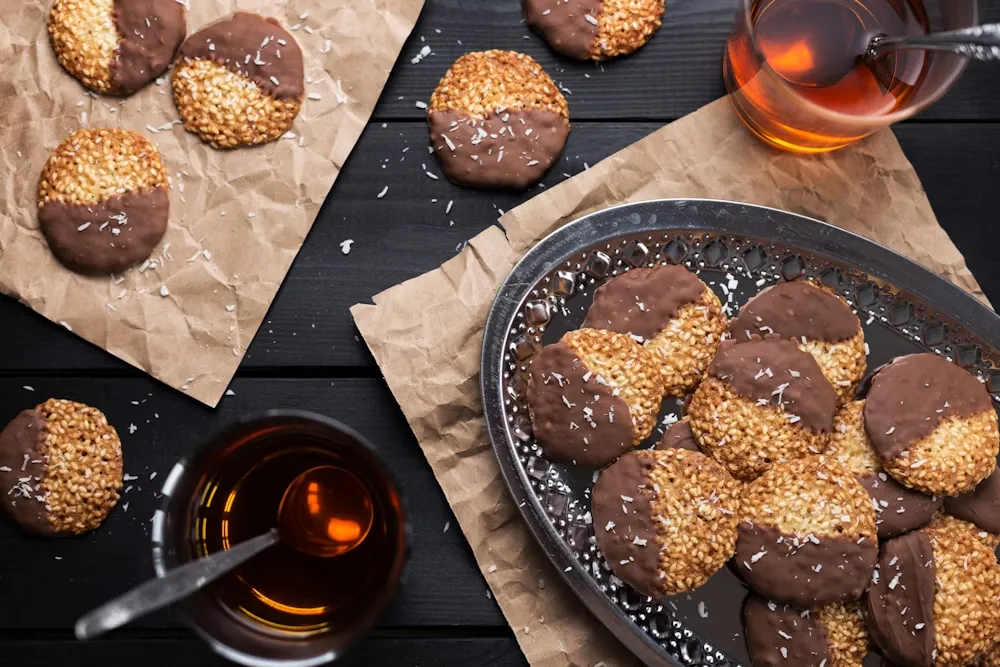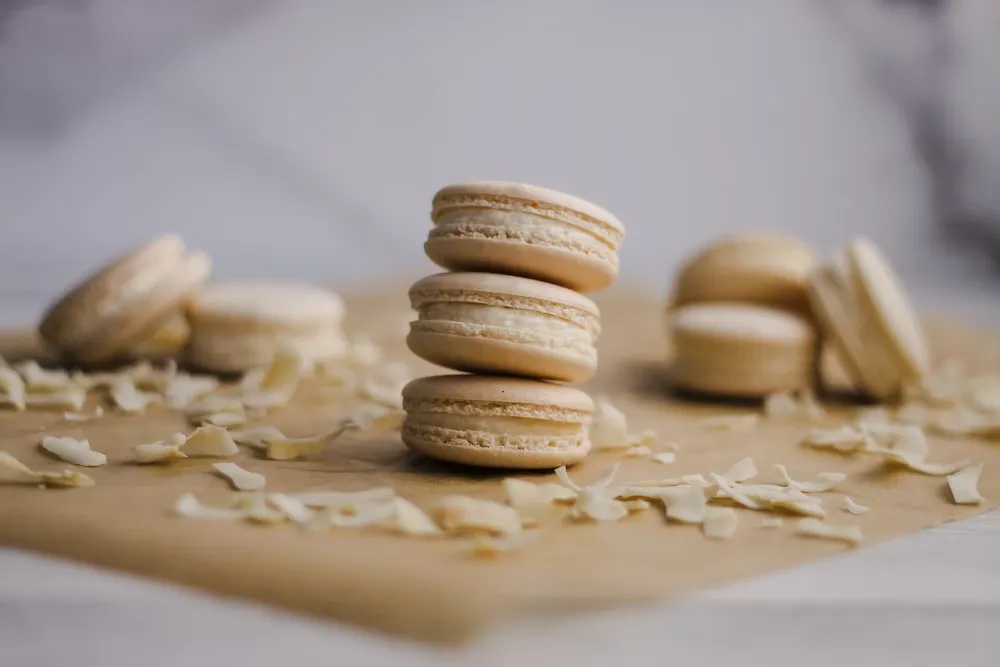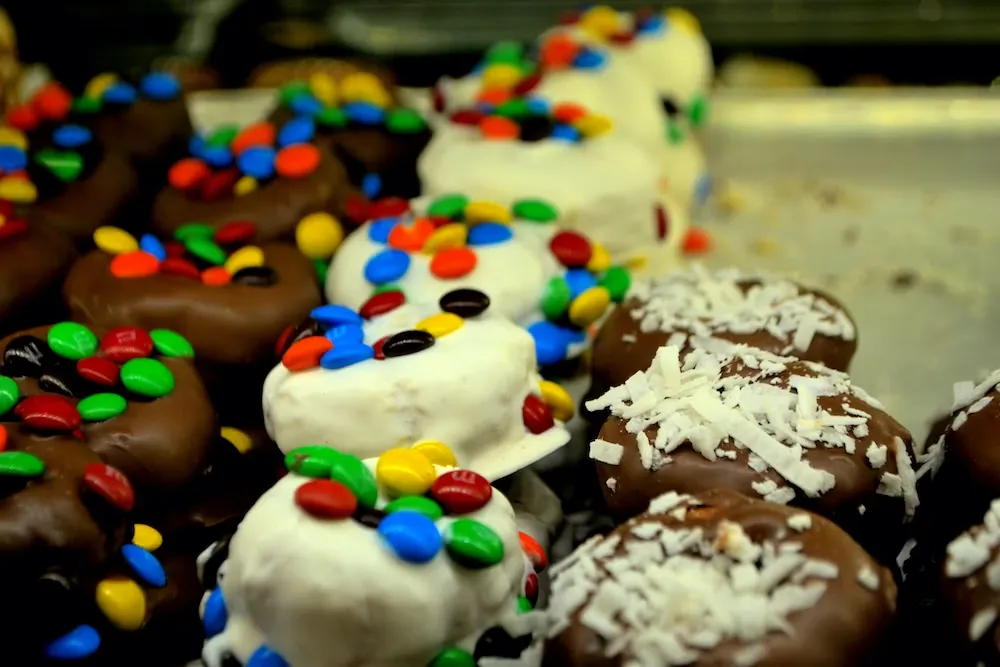Unveiling the Delightful World of Biscotti al Cocco
When it pertains to delectable confections, few can rival the allure of biscotti. An especially noteworthy variation of these Italian confections, which have captivated the globe, is Biscotti al Cocco, the sensation imbued with coconut. We cordially invite you to embark on an enchanting exploration of the diverse array of international cookies that have graced our tables throughout the years.

Biscotti al Cocco: A Coconut Lover’s Dream
Coconut biscuits, or biscotti al Cocco, are buttery, crumbly cookies in which the coconut is left to flourish. The mixture is a cohesive combination of grated coconut, eggs, sugar, and butter. Upon being incorporated, it is deftly formed into appetizing structures, consisting of either flattened discs or spherical morsels. They are golden and crisp when baked to perfection; they are ready to be enjoyed. Delight in the simplicity of these cookies unadulterated, or embellish them with a layer of powdered sugar or molten chocolate for added decadence.

Sju Sorters Kakor: The Swedish Tradition of Seven Kinds of Cookies
Sweden considers hospitality to be an art form, which is exquisitely reflected in the “Sju Sorters Kakor” tradition. This Swedish cultural custom, which literally translates to “seven varieties of cookies,” is particularly observed during the esteemed “fika” coffee gatherings. As a token of courtesy to visitors, it has been customary for generations to present at least seven varieties of cookies, such as drommar, hallongrotta, brysselkex, and others. A reduced offering could be interpreted as disrespectful. Although the “seven” rule is no longer strictly enforced, it continues to represent Swedish hospitality, having evolved from cookies to confectionary and cakes over time.

Pastissets: The Spanish Powdered Sugar Cookies
During our sojourn in Spain, we come across Pastissets, which are exquisite pastries composed of powdered sugar. The dough is formed into diverse shapes using lard, butter, sugar, egg yolks, flour, cinnamon, and grated lemon peel. Prior to baking, it undergoes a process of rolling and cutting to achieve an ideal golden hue. After the cakes have chilled, they are prettily adorned with an abundance of icing sugar. Olive oil or anisette may even be incorporated into some variations of pastissets, which makes them the ideal accompaniment to an afternoon tea.

Bethmännchen: A Christmas Classic from Germany
For more than two centuries, Bethmannchen cookies have been closely associated with the holiday season in the center of Germany. By way of Frankfurt, these delectable pastries are crafted from rose water-infused marzipan dough. Prior to baking, each cookie is adorned with three almond halves for embellishment. Pretending to be inspired by the Frankfurter Brenten, these cookies were reportedly created in 1838 by a pastry chef to commemorate the four sons of the Bethmann family.

Casadinhos: The “Married” Cookies of Brazil
When we travel to Brazil, we encounter Casadinhos, which are wedding-favorite bite-sized pastries. The Portuguese translation of the moniker “married” symbolizes the union of flavors. The dough for these cookies consists of a straightforward combination of butter, flour, eggs, and sugar; for an added touch of flavor, lemon zest and vanilla may be utilized. After forming the dough into small spheres, which have been slightly flattened, it is baked until it attains an appetizing golden color. As per custom, they are stuffed with guava paste or dulce de leche to form a delectable sandwich.
Rock Cakes: England’s Tea-Time Treat
A tea-time experience in England is incomplete without Rock Cakes. With their light, crumbly consistency, these traditional biscuits are the perfect accompaniment to afternoon tea. The fundamental ingredients consist of flour, sugar, baking powder, butter, eggs, vanilla extract, milk, and dried fruits such as raisins or sultanas. The irregular, dense dough is arranged on a baking sheet, heated to a golden brown color, and is most appetizing when still warm. Although they bear a resemblance to scones, they are differentiated by their unique texture and reduced dimensions.
Palets de Dames: Delicate Treasures from France and Belgium
An exploration to the northern regions of France and Belgium yields the remarkable Palets de Dames, which are colloquially referred to as “ladies’ pucks.” Adorning these buttery biscuits frequently are apricot jam and sugar icing flavored with lemon. Certain iterations incorporate flavors such as rum, vanilla, or aniseed, and may also have currants, raisins, or almonds as embellishments. Traditionally, Palets de Dames are savored as a midday nibble accompanying afternoon tea.
Basler Läckerli: Switzerland’s Spiced Delight
Basler Lackerli, a hard, spiced pastry made in Switzerland from hazelnuts, almonds, candied peel, honey, and Kirsch, is produced in Switzerland. Before being glazed with sugar, these cookies, which have a lengthy history dating back to the Middle Ages, are traditionally cut into rectangular sections. They are a staple during the holiday season, but they can be enjoyed throughout the year.
Prianik: Russia’s Flavorful Sweet Bread
Prianik is a delectable confectionery item popular in Russia, consisting of a variety of spices including anise, cinnamon, ginger, cardamom, nutmeg, and cardamom. It evolved over time to include a variety of fruit preserves, caramelized milk, and condensed milk. Historically, it was composed of rye flour, honey, and berry juice. Presently, Prianik is a cherished complement to coffee or tea, serving as an ideal midday nibble.
Silvanas: The Frozen Filipino Delicacy
Without competition, the Philippines presents Silvanas, a delectable frozen cookie sandwich that is an adaptation of the traditional delicacy. Two cashew-meringue wafers are stacked atop one another with a substantial amount of buttercream, which is encased in cashew crumbles. Although plain Silvanas are prevalent, they are also available in chocolate, strawberry, mocha, and mango varieties, among others. To ensure an optimal experience, serve them icy or well-chilled.
Krakeling: A Dutch Twist on Pretzels
The Netherlands introduced Krakeling, a variant of a pretzel distinguished by its sugary kringle shape. Krakeling, which is customarily garnished with cinnamon or sugar, possesses cultural importance. Symbolizing the cycle of life, it is a customary tribute at funerals and cremations in its enlarged form.
Štramberské Uši: Czech Ears with a Sweet Twist
Štramberské Uši, a baked delicacy originating from the Czech Republic, is composed of a variety of ingredients including flour, sugar, eggs, water, baking powder, honey or caramel, and a blend of seasonings. Once the pastry has been baked, it is deftly twisted into a cone-like shape that resembles human ears; thus, the name “uši.” Delightful in flavor, this delicacy features an ideal proportion of spices. According to legend, the formation of Štramberské Uši was precipitated by a momentous tempest that ravaged the Tatar forces in 1241.
Conclusion
A Delectable Journey through Cultures, Traditions, and Flavors is the realm of pastries. Each cookie narrates a distinct tale, starting with the coconut-infused Biscotti al Cocco and progressing to the delicate elegance of Palets de Dames and the spiced Swiss delicacy of Basler Lackerli. Investigating these confectioneries entails more than simply relishing their flavor; it also entails comprehending the cultural and traditional significance they symbolize.
